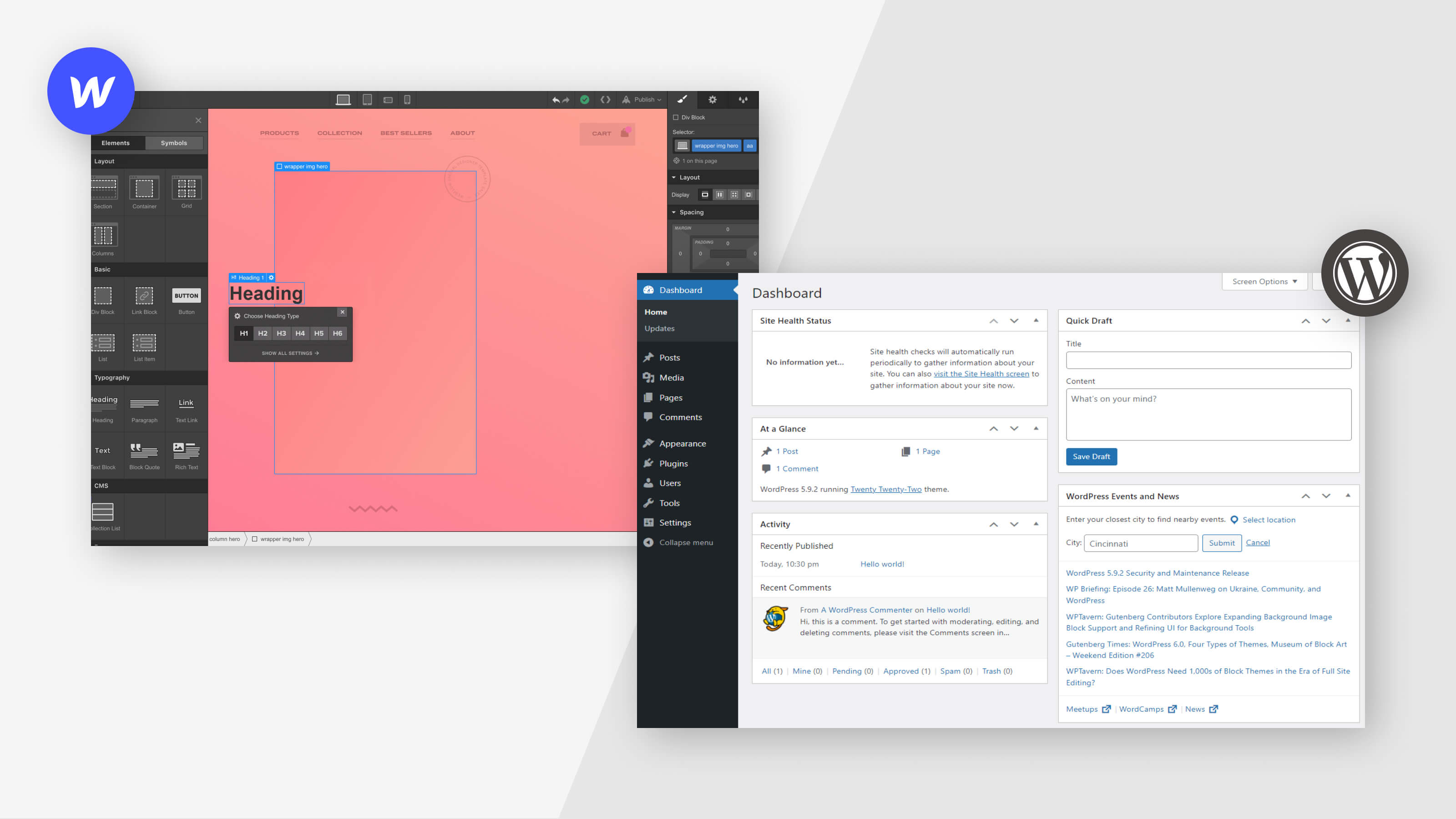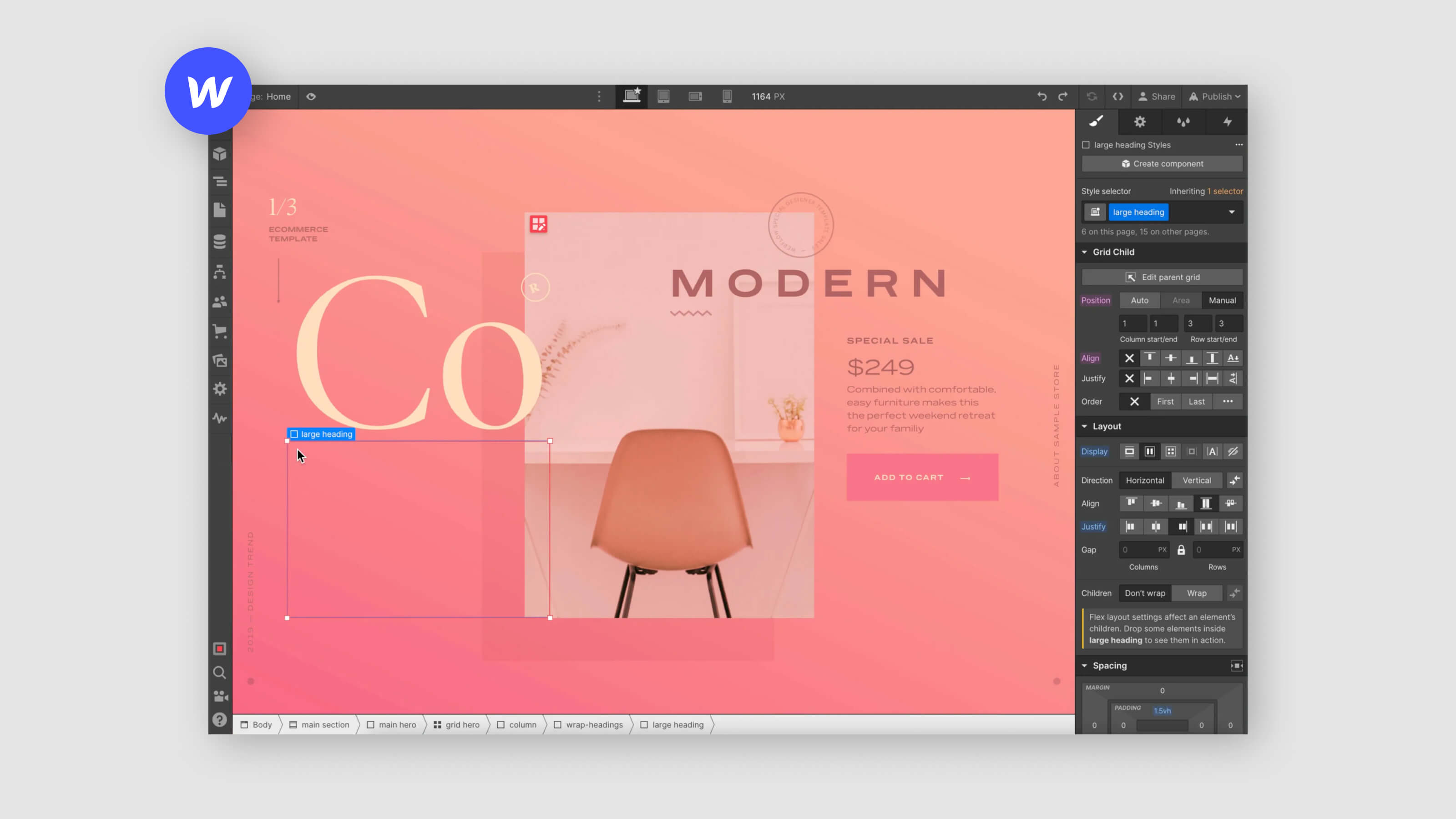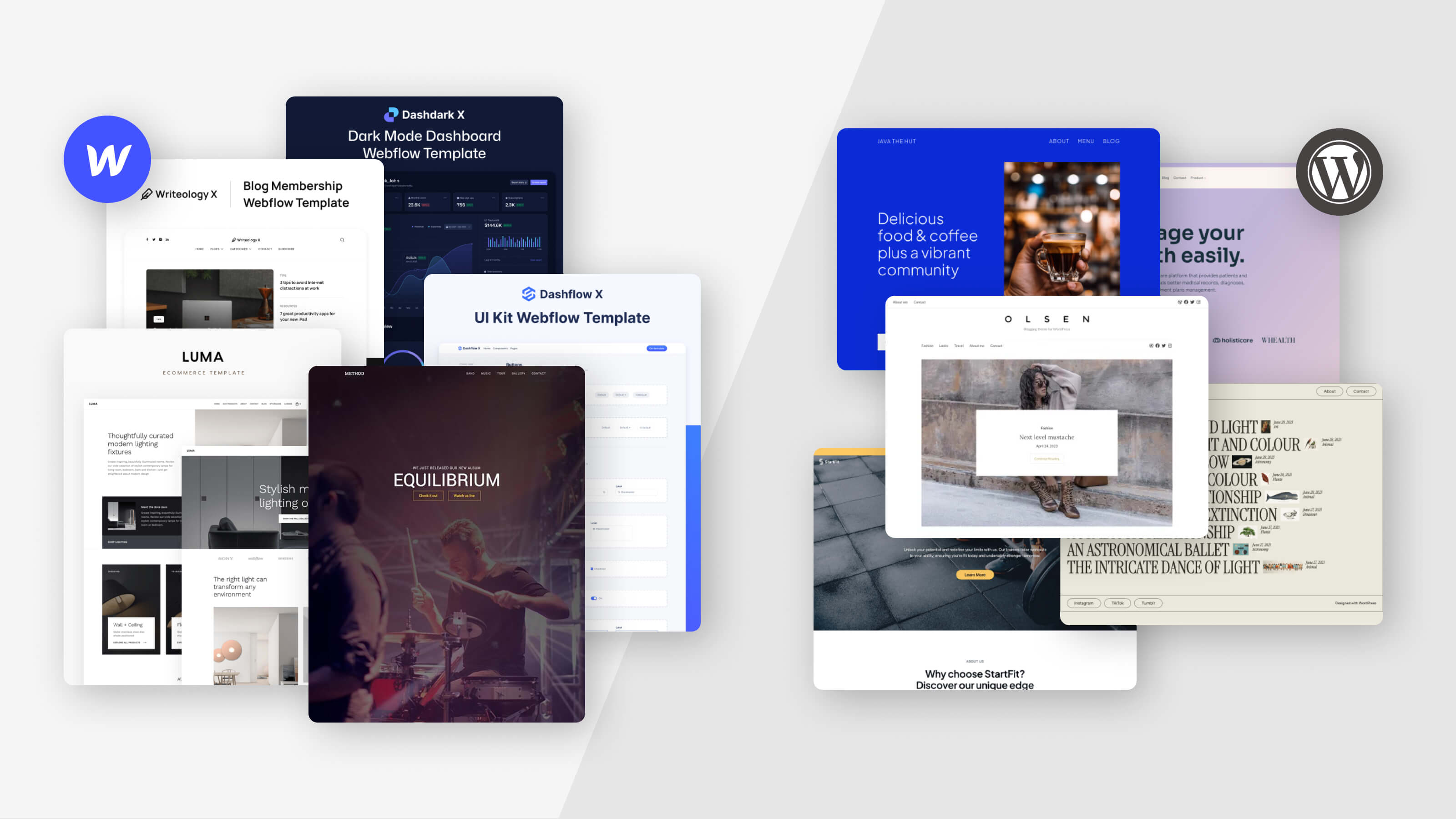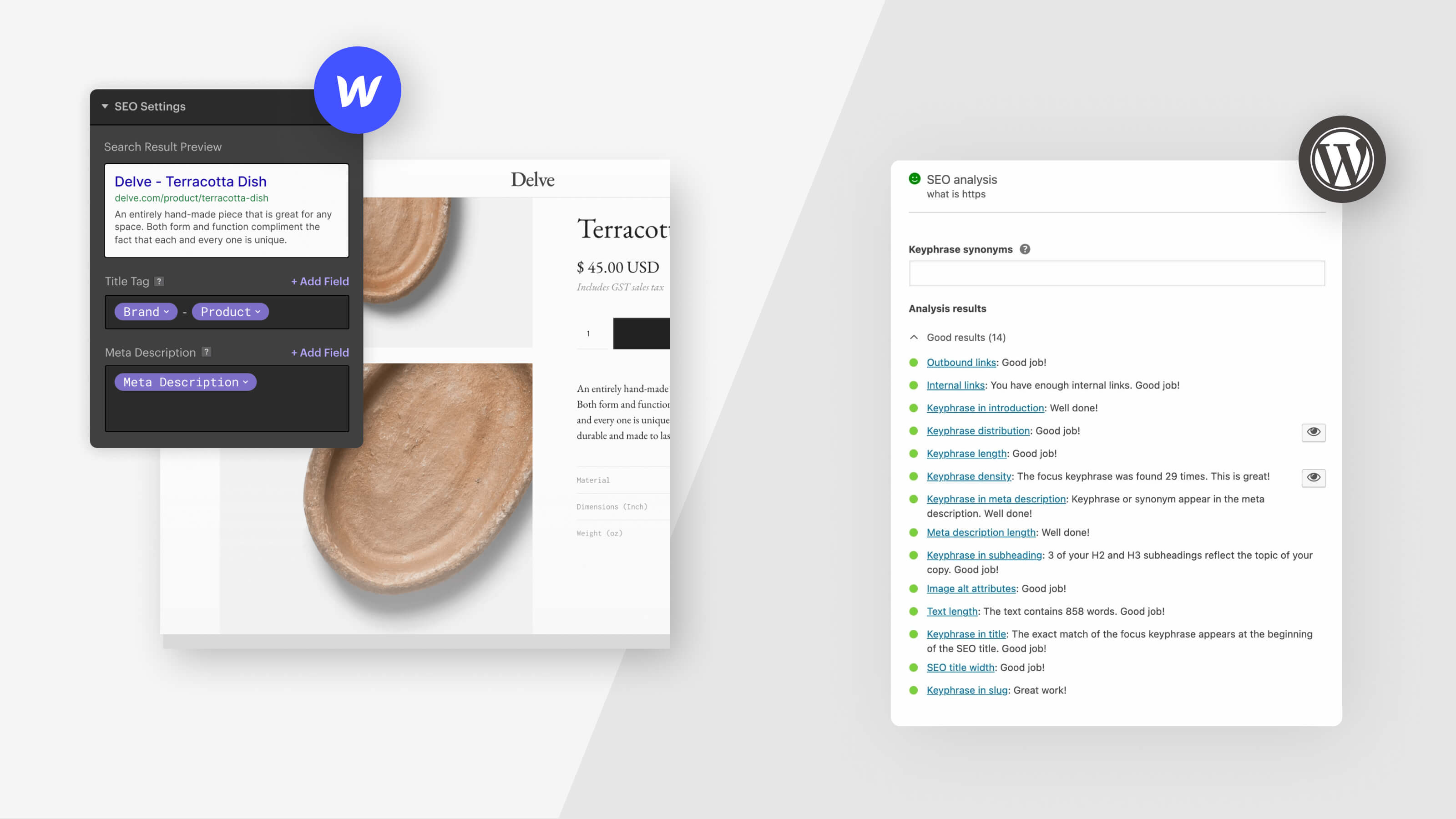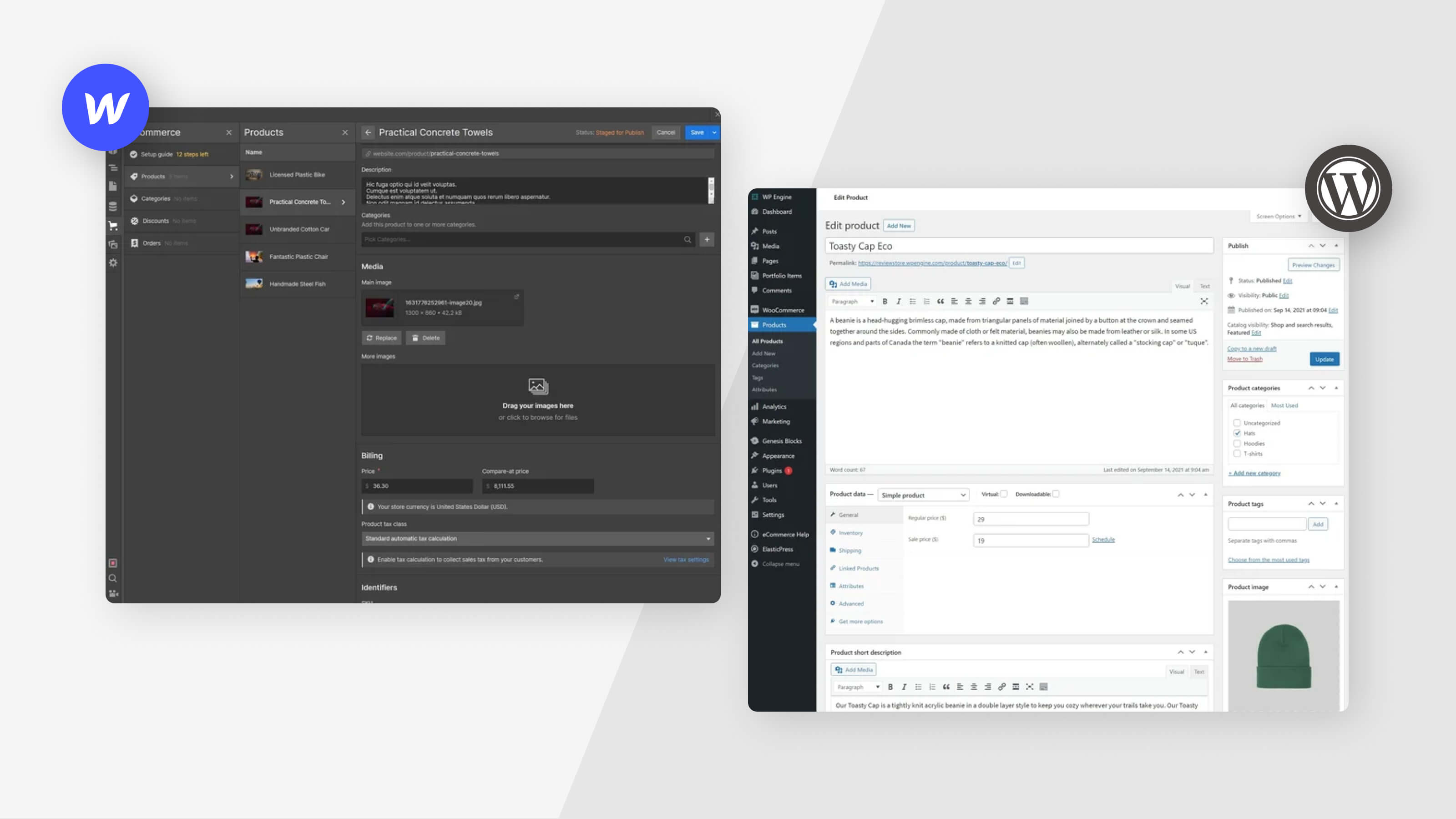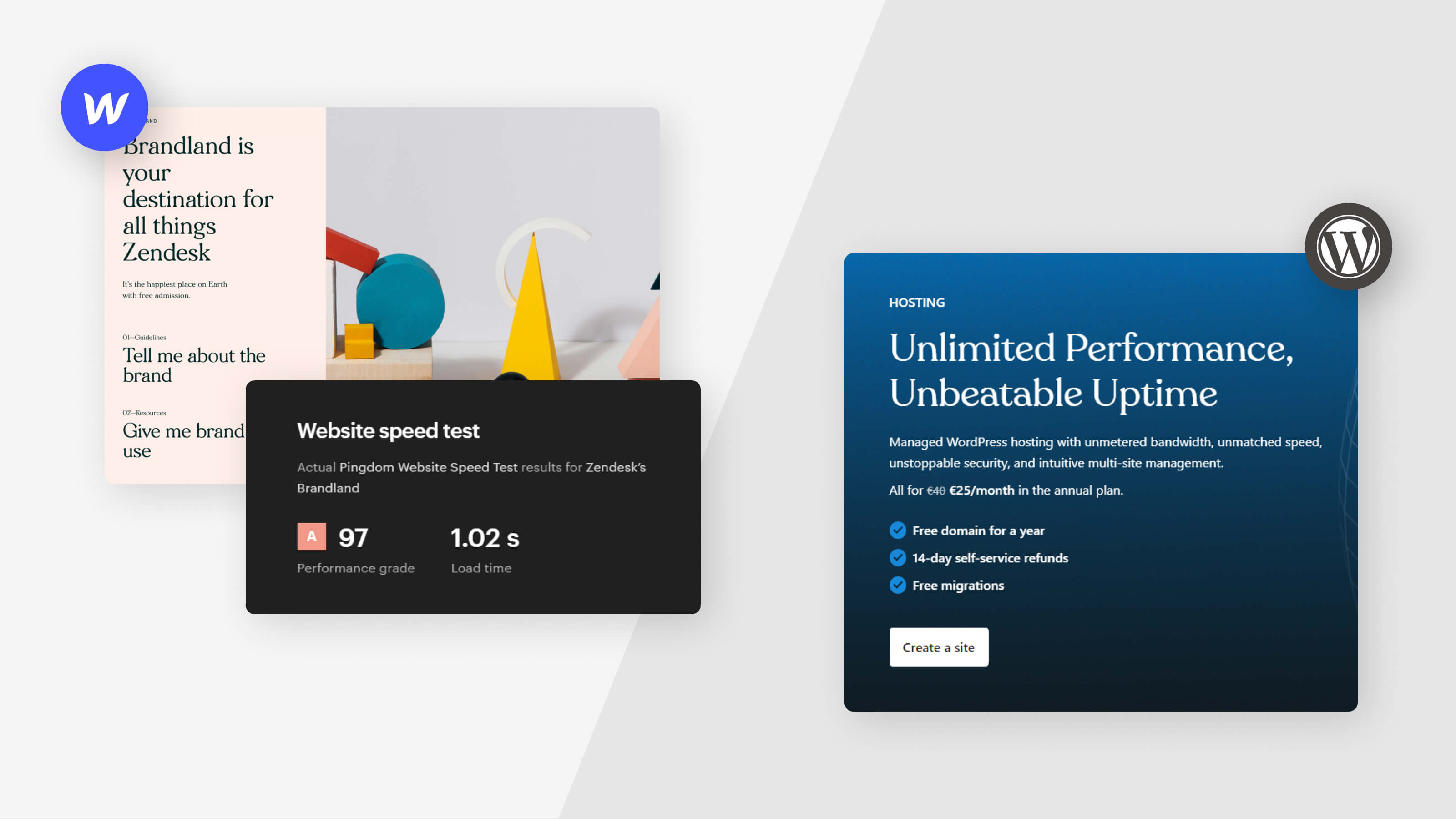In the contemporary digital scene, the decision-making process surrounding website-building platforms has become an essential consideration for professionals such as executives, marketers, and startup founders. At the forefront of this decision lie two major contenders: WordPress CMS, an open-source content management system commanding a substantial 39% market share, and Webflow SaaS, a streamlined Software-as-a-Service application. These platforms offer powerful solutions for website creation, catering to individuals with varying levels of technical expertise.
However, they adopt contrasting methodologies in achieving this goal. Understanding the fundamental differences between WordPress and Webflow is crucial for professionals embarking on website development projects, irrespective of their proficiency level. Through a comprehensive comparison, this analysis will explore the distinct strengths and weaknesses of WordPress and Webflow, providing valuable insights to assist in the selection of the most suitable platform for specific project requirements.
